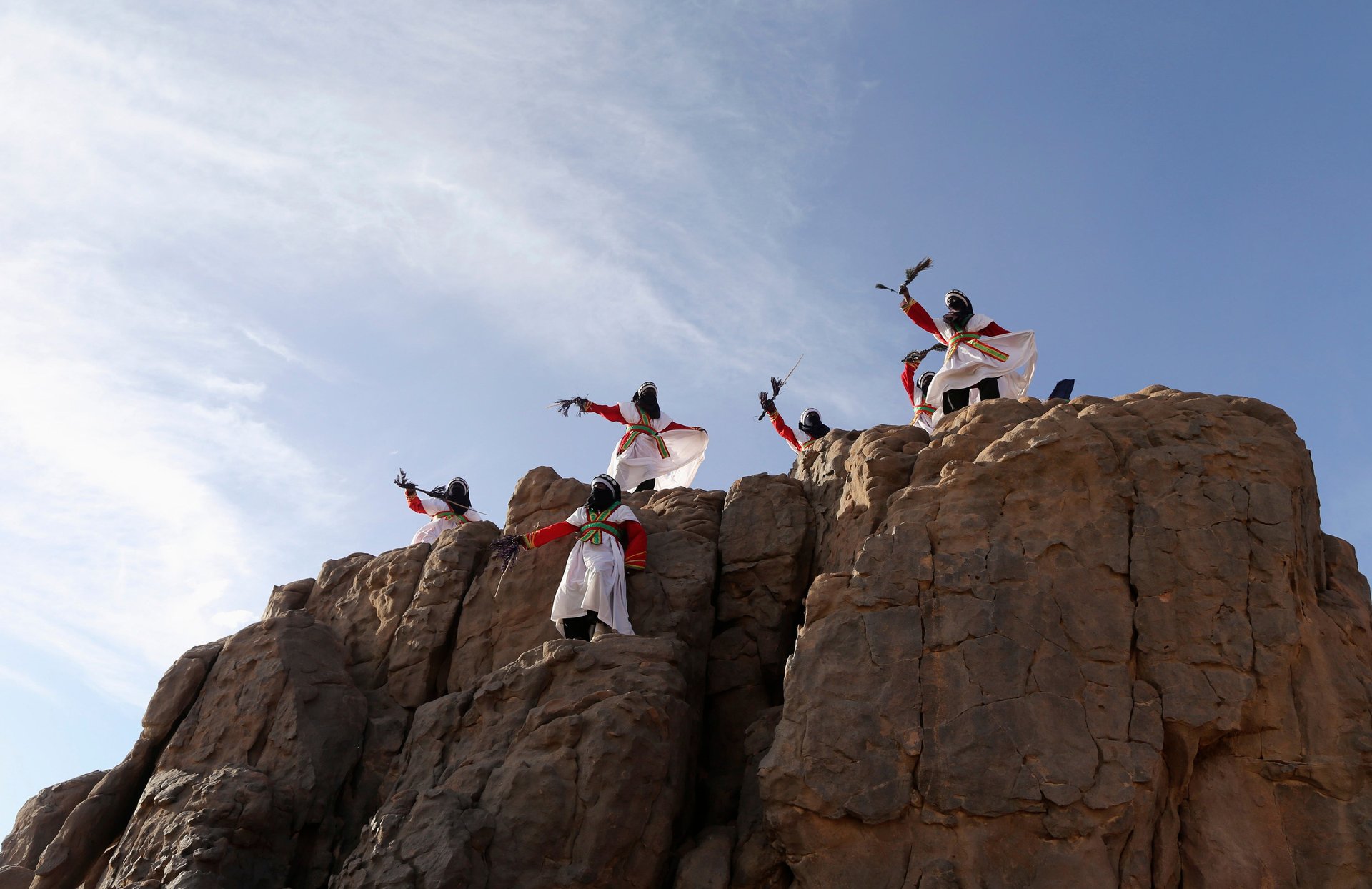Marvel’s ‘Black Panther’ is a broad mix of African cultures—here are some of them
Wakanda may not have been real, but the Black Panther costume designer Ruth Carter and Hannah Beachler, the film’s production designer, both drew on very real tribes and cultures to represent the various peoples that form part of the nation of Wakanda.
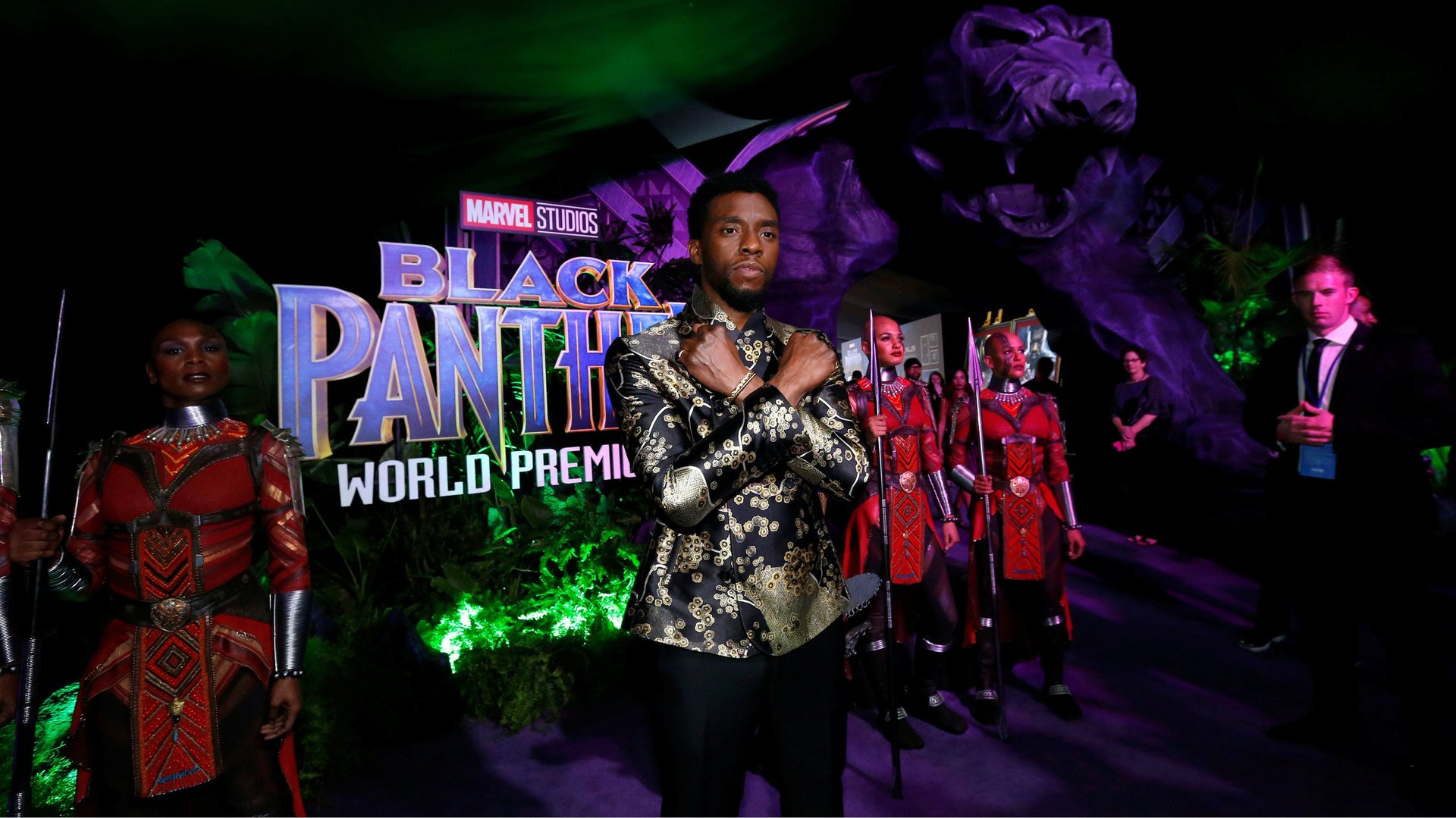

Wakanda may not have been real, but the Black Panther costume designer Ruth Carter and Hannah Beachler, the film’s production designer, both drew on very real tribes and cultures to represent the various peoples that form part of the nation of Wakanda.
In Black Panther, Wakanda is a kingdom made up of several different tribes, each with their own distinctive style. Carter and Beachler researched traditional culture and clothing which they drew from across different parts of the continent.
Carter particularly drew on the work of contemporary fashion designers who use African traditions in current trends and textiles. She was inspired by the wool collection of South African designer Laduma Ngxokolo’s Maxhosa range, the tailoring of Ghanaian-British designer Ozwald Boateng and the silhouettes and prints of US-based Nigerian couturier Duro Olowu, she told The Atlantic. There were also nods to the dapper street style of Congolese sapeurs and the Afrofuturist originality of Afropunk festival-goers.
By drawing on existing cultures, the film’s costume aesthetically situates the fictional Wakanda as part of the African real continent. These are some of the tribes whose influence and styles can be spotted in Black Panther’s Wakanda.
Basotho, Lesotho
A tribe of warriors disguised as simple farmers protect Wakanda’s borders. Their most distinctive costume features are the blanket cloaks they wear, the traditional gear of the Basotho people. In Lesotho, a mountainous country surrounded by South Africa which gets snow in the winter, the Basotho blanket holds deep significance.
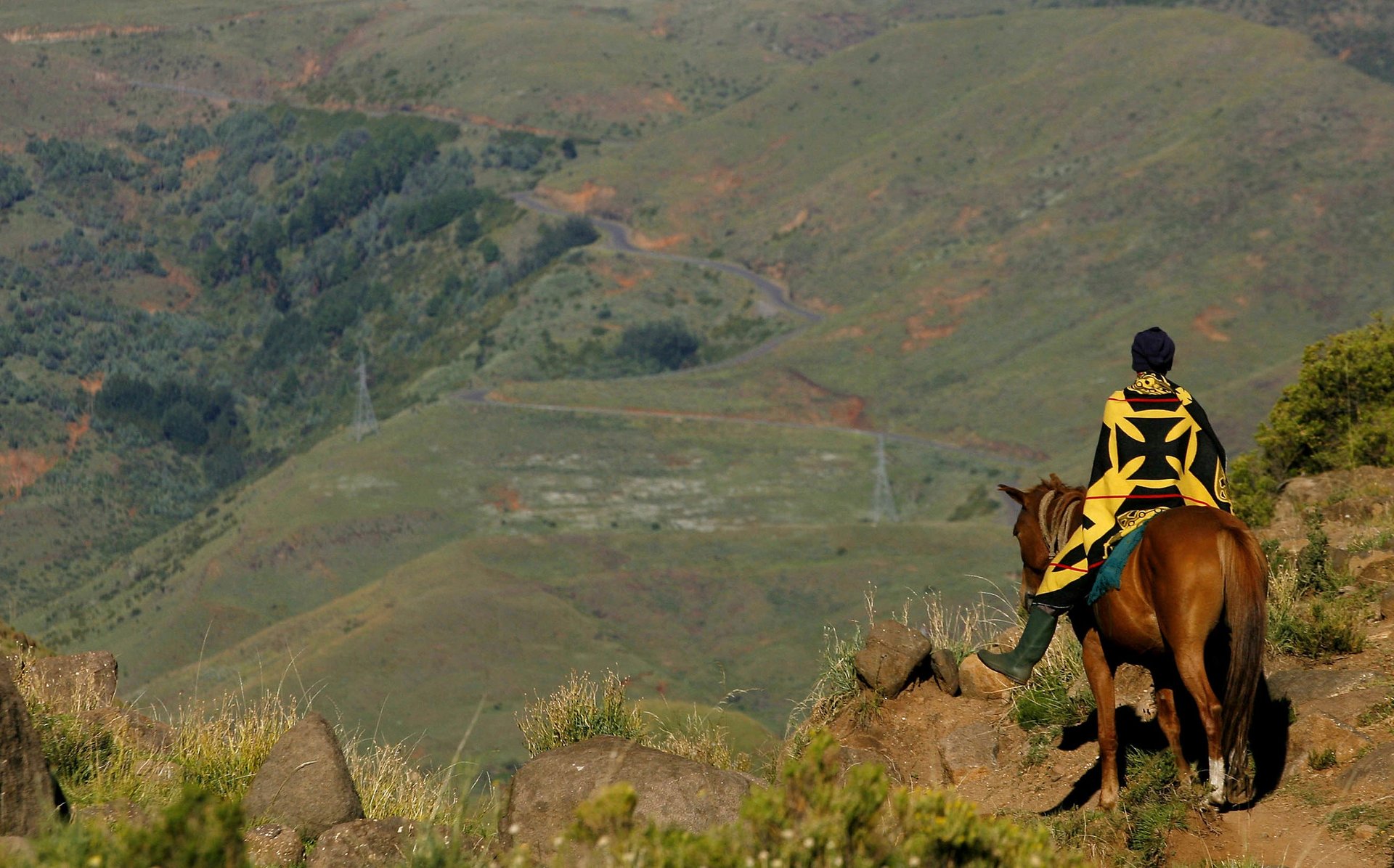
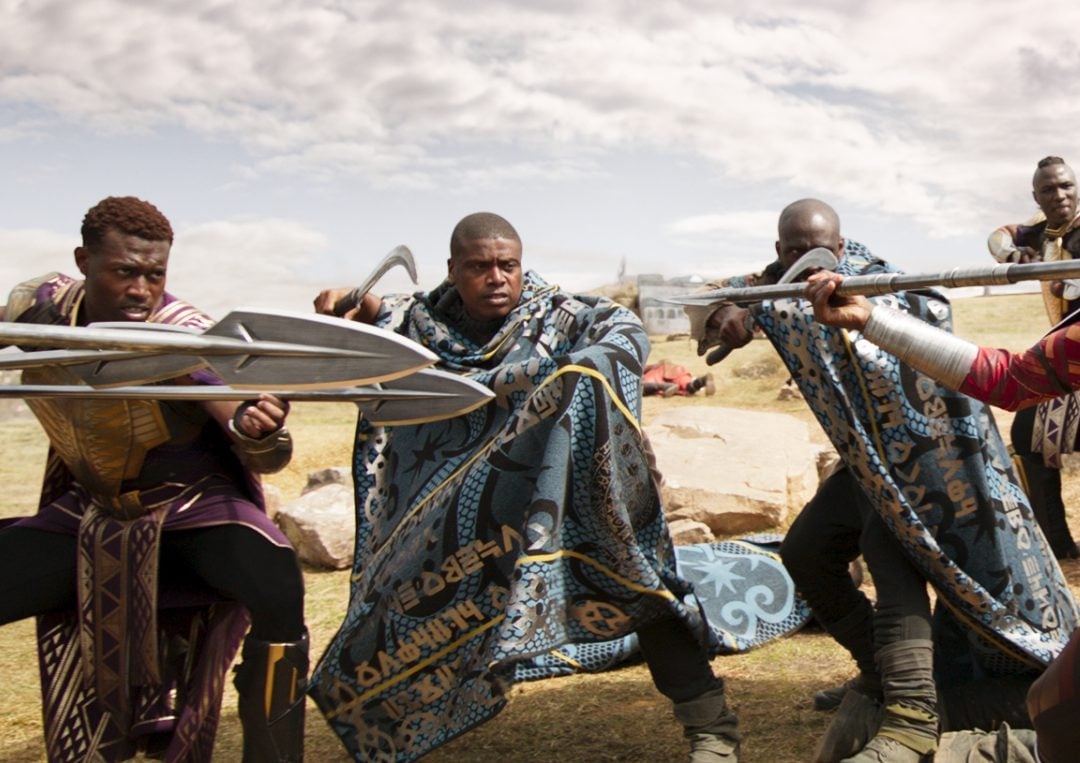
Produced by one company sanctioned by the Basotho royal family (although that didn’t stop Louis Vuitton being very closely inspired by the blankets for their spring summer 2017 collection for more than ten times the price), the symbols on the blanket have meaning. The most prestigious being the corn cob found on the seanamarena, meaning “to swear by the chiefs.” In the film, the blanket cloaks worn by the border tribe have a Wakandan symbolism and technology that turns them from farmer to warrior.
In the film, the border tribe live in the mountains that hide Wakanda, living in simple villages. In the film, the rolling green landscapes of the border tribe look very much like those of Lesotho. What’s more, the border tribesmen and women are skilled riders, just as the Basotho, except that in the film they ride armored rhinos rather than horses.
Ejagham, Nigeria
In several scenes in the movie, “Wakandan” text appears on the screen and is inscribed on the walls in T’Challa’s throne room. In reality though, the script draws inspiration from Nsibidi, with origins in modern-day Cross River in southeast Nigeria.
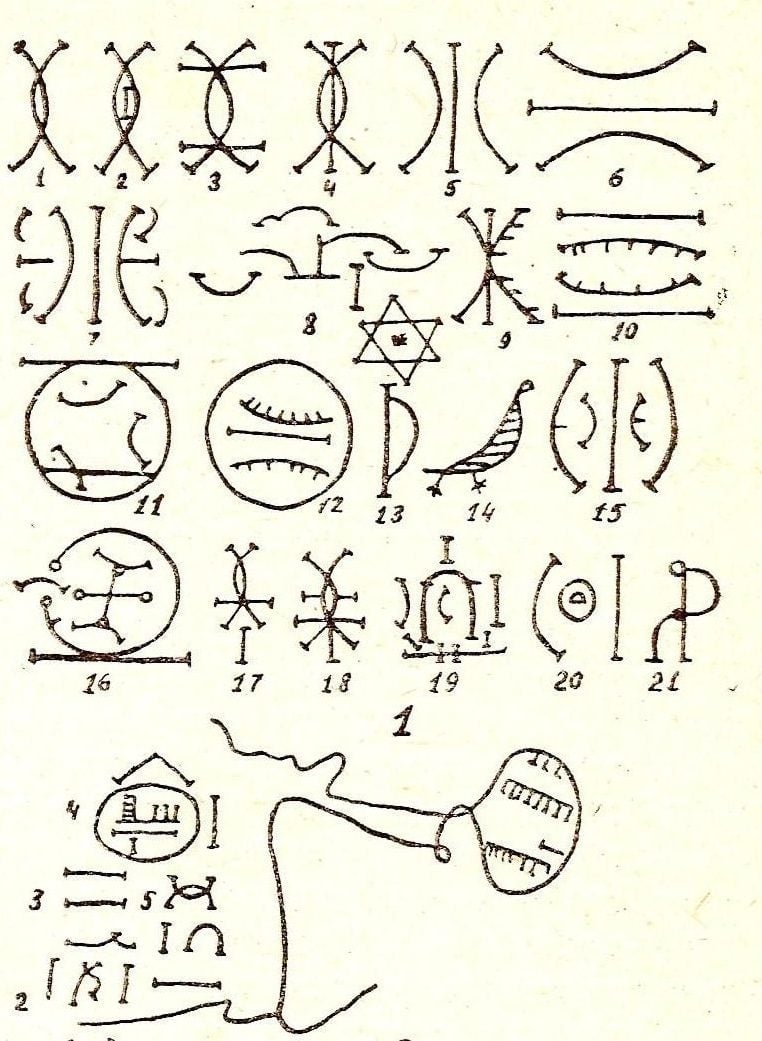
So far, the Nsibidi symbols that have been discovered number in hundreds but it’s possible even more are in existence. While the script is still sparingly used in Nigeria’s southeast, colonization, particularly education and religion, have drastically reduced its use.
Ndebele, South Africa
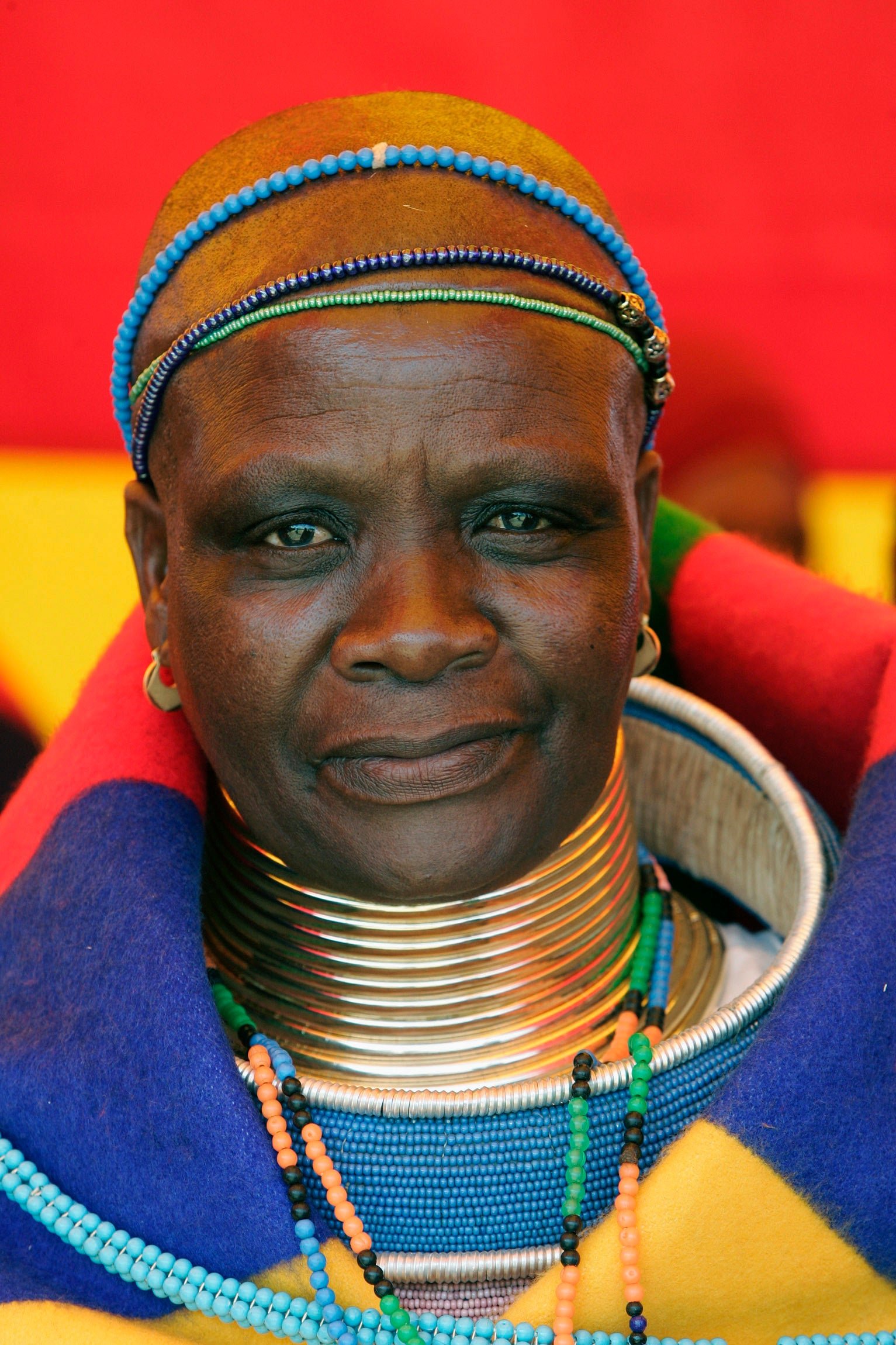
The gold rings worn around the necks of the Dora Milaje come from the Ndebele tribe of South Africa. Known as indzila, only married Ndebele women may wear the rings, even though they’ve become something of a fashion trend in South Africa recently. Traditionally, husbands are supposed to provide the rings, once they have built a home for their wives. The wealthier a husband is, the more rings a woman has.
Today, the aesthetics of the Ndebele culture are still one of the most instantly recognizable South African cultures. Along with the intricate beading, Ndebele women are known for their bold, colorful wall paintings dotted all over eastern South Africa, and which could also be spotted on some of the walls of downtown Wakanda. Esther Mahlangu, is perhaps the most well known Ndebele artist, most recently commissioned to design the interior of a limited edition BMW.
ovaHimba, Namibia
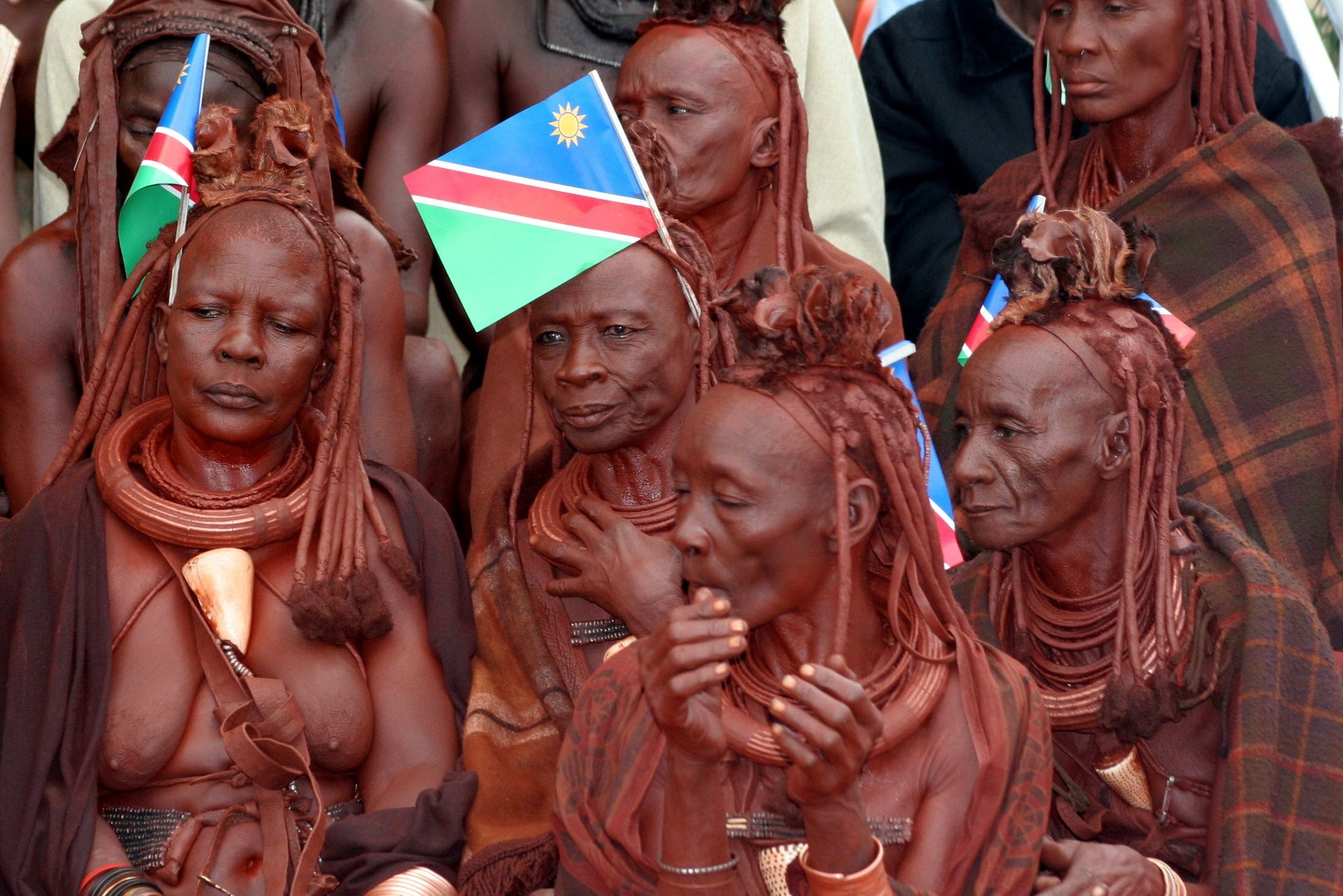
One of the elders in Wakanda wears the distinctive locks of ovaHimba women. Sculpted in otjize paste, made of butter, fat, red ochre and scented with herbal aromatics, ovaHimba plait or twist their hair into thick locks, often leaving ends to puff. Living in the unforgiving desert climate of northern Namibia, ovaHimba also protect their skin with the red-brown otjize paste.
Guidebooks and tourism sites on Namibia almost always feature images of this tribe and their red-tinted skin. The ovaHimba are believed to live in relative isolation, but tourism and globalization have followed them into the desert.
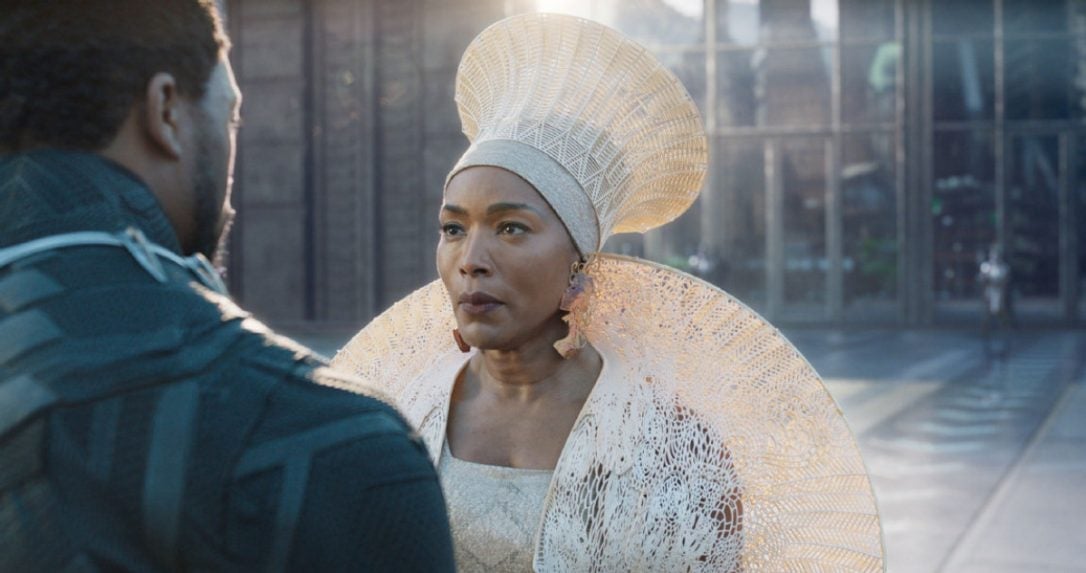
Zulu, South Africa
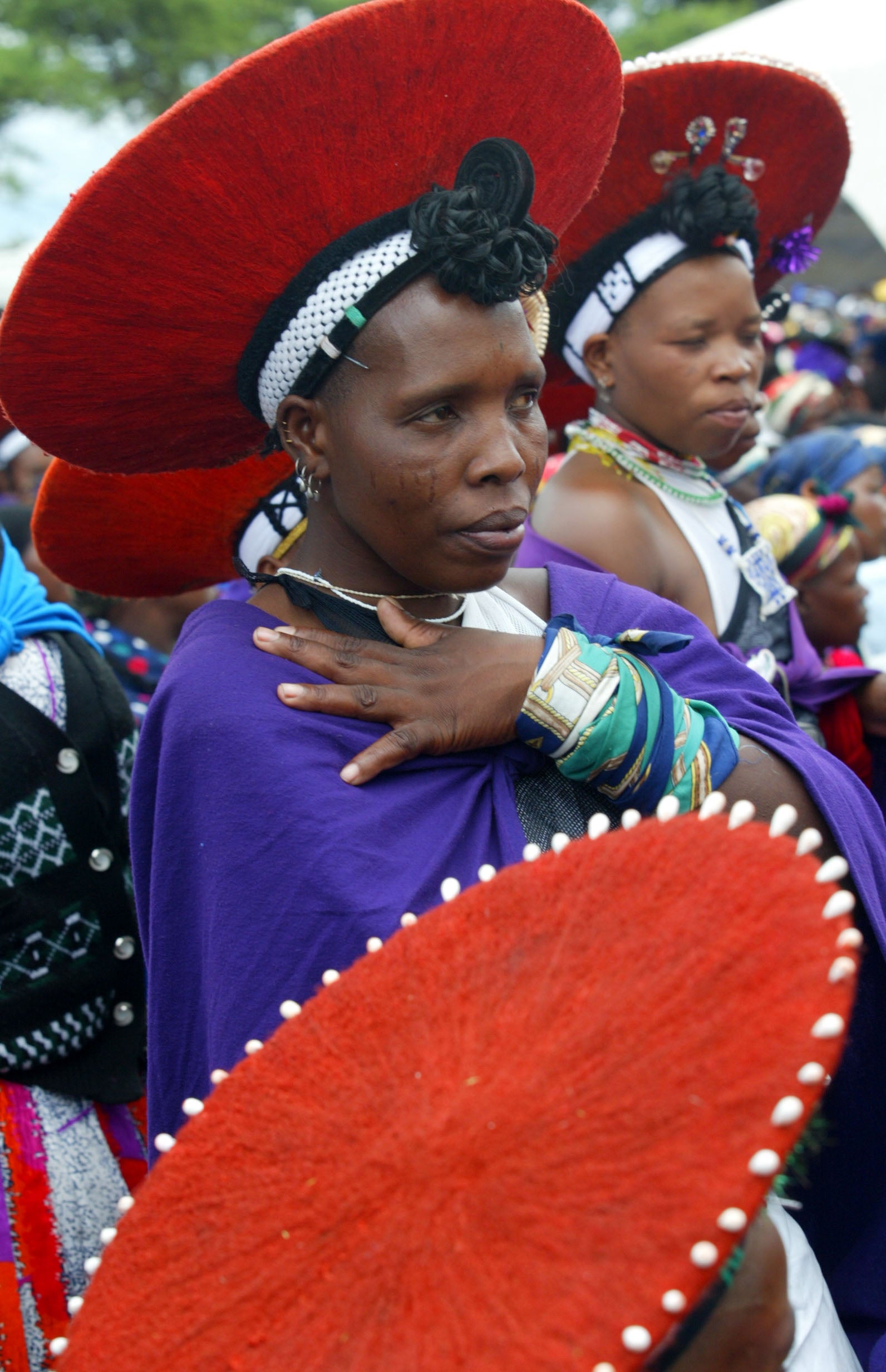
Angela Basset as Queen Mother Ramonda makes an entrance with a large disc head dress. In most of her scenes she wears a smaller version of the hat, which Carter borrowed from Zulu culture. The isicolo is a hat worn by married women, and was traditionally shaped from grass fronds, with cotton woven through. Their sizes and colors differ between clans, at times reaching a meter in diameter. For Black Panther, Carter had Ramonda’s dramatic white isicolo 3D-printed, according to an interview with Vanity Fair.
Maasai, Kenya/Tanzania
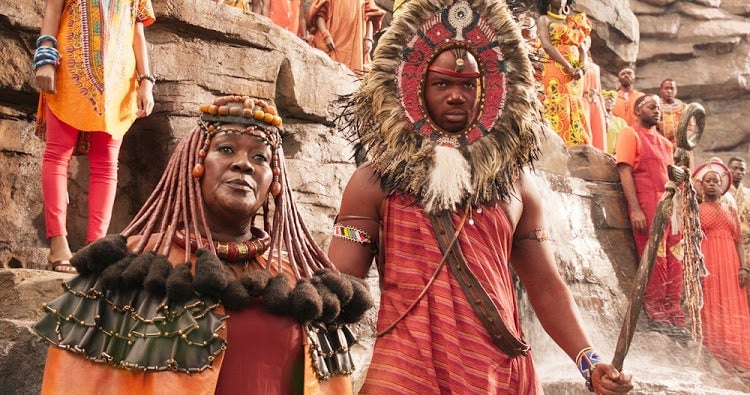
The Dora Milaje, with their deep red armor and tall spears look like Maasai warriors, which was the look Carter was going for. The Maasai Shuka is instantly recognizable as the red and blue chequered (sometimes with black, yellow or green, but red is always the base color) shawl draped over the semi-nomadic Maasai.
Today, the Shuka has been tailored into jackets, trousers and handbags as it becomes an iconic Kenyan cloth. While the exact origin story of why the Maasai began to wear the shawls is unclear, they fought for ownership of the design when Louis Vuitton borrowed their look for their 2012 spring summer collection, without compensation. Carter also drew inspiration from Maasai beading techniques, especially the disc necklaces and packed beaded necklaces worn by Maasai women.
Dahomey, Republic of Benin
The fearsome Dora Milaje have long been a feature of Black Panther comics but the all-female military unit are believed to be inspired by a real-life version of female soldiers which existed from the 1600s in Dahomey, present-day Republic of Benin in West Africa. In the movie, the group is led by American-Zimbabwean actress, Danai Gurira, and primarily acted as bodyguards to King T’Challa. However, in their day, the “Dahomey Amazons” as they were named by Western historians, fought wars for the kingdom most notably against colonial French forces.
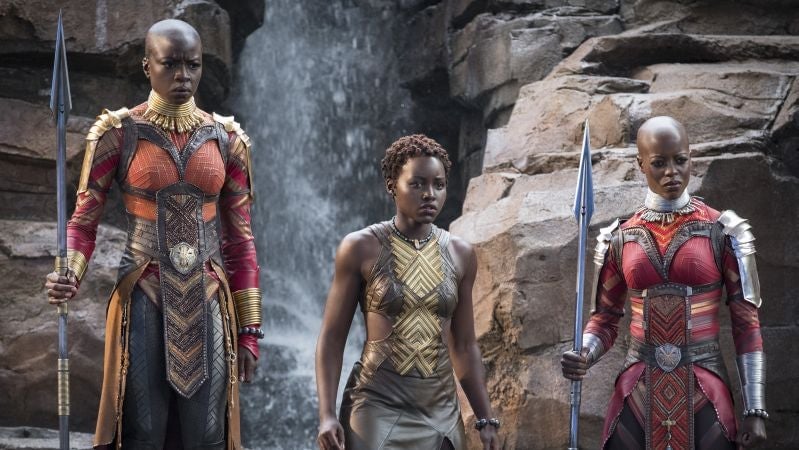
Igbo, Nigeria
In one of the early scenes in the movie, Michael B. Jordan’s character visits a London museum for a heist during which he steals a menacing long-horned mask complete with a mane. It appears to have drawn inspiration from Mgbedike, a relic of Igbo origins in southeast Nigeria. Mgbedike translates as “time of the brave” and is used during local rituals. While there are various versions, the masks typically depict aggression with features such as horns and bared teeth.
Benin, Nigeria
In the same London museum scene, Michael B. Jordan inquiries about bronze heads on display. The bronze heads are popularly known to be from the ancient Benin Kingdom in Nigeria’s south. Even though they remain in production in Edo, many ancient samples plundered in the late 1800s remain on display in Western museums. Indeed, there have been campaigns for the repatriation of some of the artifacts. In one instance in 2016, “Okukor,” a Benin bronze cockerel, was removed from a Cambridge University following protests by students. The repatriation of African art is prominent in the scene as Jordan’s character, which is portrayed as being strongly anti-colonial throughout the movie, accused the museum officials of theft.
Mursi, Ethiopia
One of the most distinctive cultures apparent in Black Panther is a lip plate worn by a Wakandan elder in the throne room. Lip plates are drawn from the culture of the Mursi in Ethiopia and are also seen among Chai and Tirma, for whom it is a source of pride and also identity. While the lip plate in the movie is worn by a man, the lip plates are typically worn by women. In the Mursi culture, teenage girls have their lower lips cut to allow for the lip-plate. Until the wound heals, the cut is held open by a wooden plug after which the opening is stretched further by inserting larger plates overtime.
Kente, Ghana
Towards the end of the movie, King T’Challa, is seen wearing a Kente scarf, the fabric which has its origins in Akan, in Ghana’s Ashanti region, where it was first woven with raffia fibers. Ancient Kente mythology suggests that the idea for weaving Kente was developed based on a spider’s web. Even though Kente has become widely worn, it was initially only reserved for royals and for special occasions.
Tuareg, Algeria/Mali/Niger
Carter often drew inspiration from several tribes to build for one character’s costume. She told Vanity Fair that the beading techniques of intricate Tuareg jewelry were a “jumping-off point” in designing clothes for everyday Wakandans. Tuareg jewelry often combines jade, amber and other stones with handcrafted silver, each piece carrying its own meaning. The hand of this nomadic desert tribe can also be seen in the draping of the priestesses.
